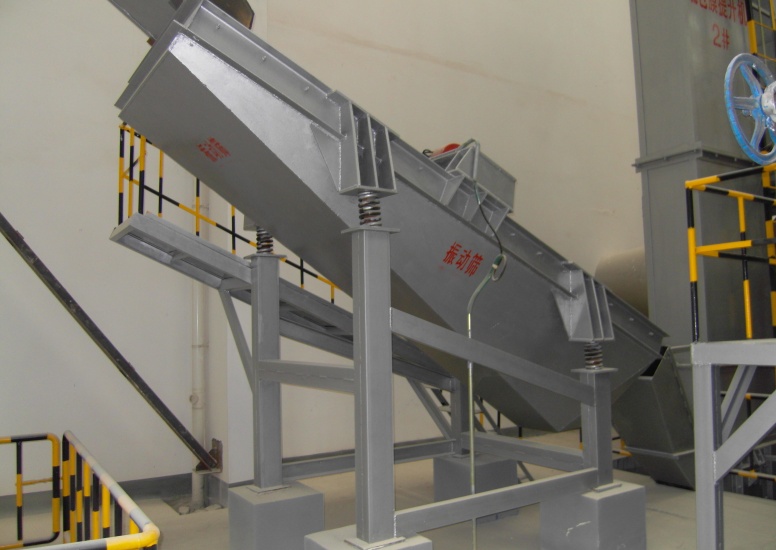A
Vibrating Screening Machine (also called a vibratory screener or vibrating sieve) is a specialized equipment designed to separate solid materials (powders, granules, or bulk solids) into different particle size fractions. It uses
mechanical vibration to drive material movement on a screen surface, allowing particles smaller than the screen mesh to pass through (called “undersize”) while retaining larger particles (called “oversize”). Its core function is to classify, filter, or purify materials, and it is widely used in industries like mining, agriculture, food processing, and fertilizer production.
The machine’s separation effect relies on the combined action of vibration force and screen mesh size, following three key steps:
- Material Feeding: The material to be screened is evenly fed onto the inlet of the screen surface (usually a horizontal or slightly inclined screen) via a conveyor or hopper.
- Vibration Transmission: A vibration motor (the core power source) generates high-frequency, low-amplitude vibration (or low-frequency, high-amplitude vibration for sticky materials). This vibration is transmitted to the screen frame, making the screen surface vibrate periodically.
- Screening Separation:
- As the screen vibrates, the material on the surface is continuously flipped and moved forward.
- Particles smaller than the screen mesh aperture fall through the gaps into the lower “undersize” collection area.
- Larger particles that cannot pass through the mesh are pushed to the outlet of the screen and discharged as “oversize” (which may be crushed again or discarded based on needs).
The machine’s performance depends on the design of its core components, which typically include five parts:
- Vibration Motor: The “power heart” of the equipment. It usually has two eccentric weights (on the motor shaft) that generate centrifugal force when rotating, driving the screen to vibrate. The vibration frequency and amplitude can be adjusted by changing the eccentric weight, adapting to different material properties.
- Screen Frame: A rigid structure (often made of steel) that supports the screen surface and connects the vibration motor. It must have high strength to avoid deformation during high-frequency vibration, which would affect screening accuracy.
- Screen Surface (Screen Mesh): The core separation component, usually made of stainless steel wire mesh, polyurethane mesh, or steel plate mesh. The mesh aperture size determines the separation grade (e.g., 1mm mesh for filtering fine powder, 10mm mesh for separating coarse granules).
- Support System: Includes springs or rubber shock absorbers installed between the screen frame and the machine base. It reduces the transmission of vibration to the ground, stabilizing the equipment and reducing noise.
- Material Hopper & Discharge Chutes: The hopper ensures uniform material feeding (to prevent local screen blockage), while separate discharge chutes collect undersize and oversize materials respectively, avoiding mixing.
Vibrating screening machines are divided into different types based on screen 层数 (number of screen layers) and structural design, each suitable for specific scenarios:
Compared with manual screening or fixed sieves, vibrating screening machines have obvious advantages:
- Higher Efficiency: The vibration force accelerates material movement and particle penetration, with a screening efficiency of over 90% (far higher than manual screening’s 50%–60%).
- Better Accuracy: Uniform vibration ensures consistent material distribution on the screen, reducing the risk of “oversize particles passing through” or “undersize particles being retained.”
- Wider Adaptability: It can handle various materials (powders, granules, even slightly moist materials) and adjust mesh sizes/ vibration parameters to meet different separation needs.
- Lower Labor Costs: Fully automated operation requires only 1–2 operators to monitor feeding and discharging, replacing 5–10 manual workers.
Vibrating screening machines are essential equipment in multiple industries, with core applications including:
- Fertilizer Industry: Screening fertilizer granules (removing ungranulated fine powder or oversized lumps), classifying different particle sizes of compound fertilizers, and filtering impurities in organic fertilizer raw materials.
- Mining Industry: Separating ore particles by size (e.g., separating coal into small, medium, and large sizes) and dewatering mineral concentrates.
- Food Industry: Screening flour, sugar, or grain (removing stones or broken particles) and classifying food additives by particle size.
- Pharmaceutical Industry: High-precision screening of pharmaceutical powders (to ensure particle uniformity for drug production) and removing foreign matter from medicinal materials.
To choose the right vibrating screening machine, focus on four core factors:
- Material Properties: For sticky materials (e.g., wet powder), select an ultrasonic vibrating screener to prevent mesh blockage; for large, hard materials (e.g., ore), choose a heavy-duty screen frame and wear-resistant polyurethane mesh.
- Screening Requirements: If only impurity removal is needed, a single-layer machine suffices; for multi-grade classification, a 2–3 layer machine is required.
- Throughput Demand: Calculate the daily material processing volume (e.g., 10 tons/hour) and select a machine with matching capacity (it is recommended to reserve 10%–20% of buffer capacity).
- Vibration Parameter Matching: For fine particles (≤1mm), use high-frequency, low-amplitude vibration; for coarse particles (≥5mm), use low-frequency, high-amplitude vibration to avoid particle damage.
In summary, a vibrating screening machine is a critical “material classification tool” in modern industrial production. It improves material quality, optimizes subsequent processing efficiency, and is indispensable in scenarios requiring precise particle size control.
